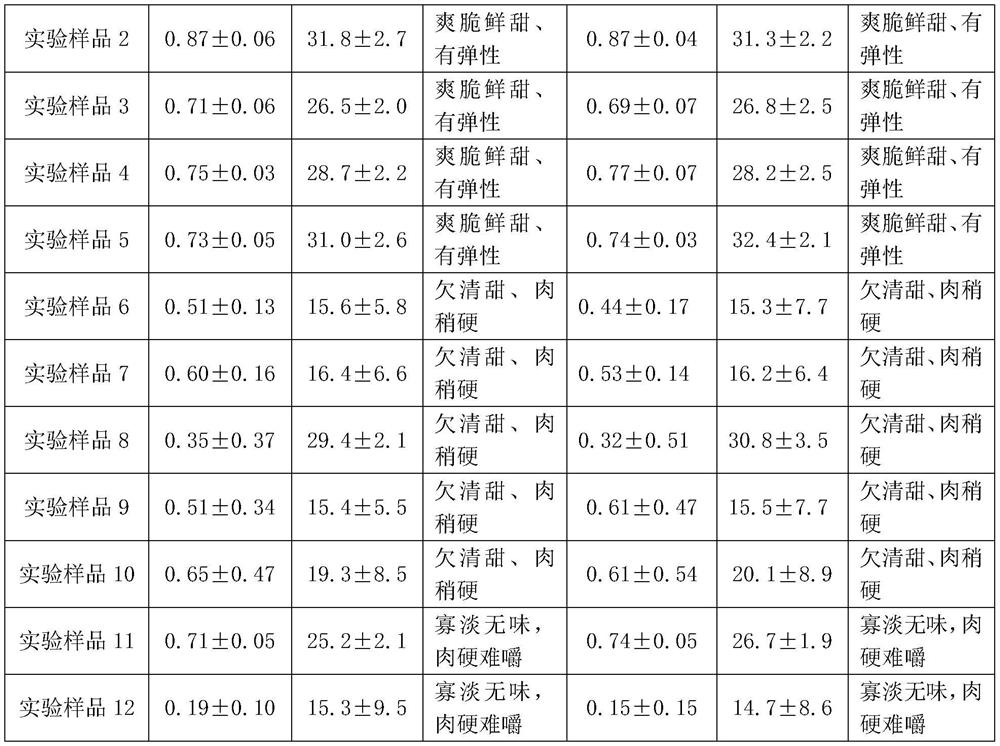A kind of culture method of thick-shell snail
A breeding method and technology for snails, which are applied in fish farming, food processing, climate change adaptation, etc., can solve the problems of inconvenient transportation and low survival rate, and achieve the effects of easy transportation, high survival rate and strong vitality.
- Summary
- Abstract
- Description
- Claims
- Application Information
AI Technical Summary
Problems solved by technology
Method used
Image
Examples
Embodiment 1
[0033] A method for cultivating thick-shell snails, comprising the following steps:
[0034] a. Construction of snail ponds: choose places with sufficient water sources and fresh and clean water to build snail ponds, and set up anti-escape walls or fences around the snail ponds. Disinfection, after the properties of the disinfectant disappear, then pile up straw on the side of the pond, and disinfect the snail pond every 20 days during the breeding process;
[0035] Wherein, the lotus is planted in the snail pond; the planting density is 3 plants / square meter.
[0036] b. Feeding young snails: Take young snails with thick shells, put them into the snail pond at a density of 490 per square meter, and feed 0.6% of the young snails’ weight every day. After 7 days of feeding, weed out dead snails and the snails with holes in the tail, the preferred young snails; the young snails bait includes the following raw materials in parts by weight: 300 parts of white wine above 50 degrees...
Embodiment 2
[0043] A method for cultivating thick-shell snails, comprising the following steps:
[0044] a. Construction of snail ponds: choose places with sufficient water sources and fresh and clean water to build snail ponds, and set up anti-escape walls or fences around the snail ponds. Disinfection, after the properties of the disinfectant disappear, pile up the straw by the pond, and disinfect the snail pond once every 30 days during the breeding process;
[0045] Wherein, reeds and water candles are planted in the snail pond; the planting density is 6 plants / square meter.
[0046] b. Feeding young snails: Take young snails with thick shells, put them into the snail pond at a density of 610 per square meter, and feed 1.8% of the weight of young snails every day. After 12 days of feeding, weed out dead snails and the snails with holes in the tail, the preferred young snails; the young snails bait includes the following raw materials in parts by weight: 600 parts of white wine above ...
Embodiment 3
[0053] A method for cultivating thick-shell snails, comprising the following steps:
[0054] a. Construction of snail ponds: choose a place with sufficient water source and fresh and clean water to build snail ponds, and set up anti-escape walls or fences around the snail ponds. Disinfection, after the properties of the sterilized medicine disappear, then pile up straw on the side of the pond, and disinfect the snail pond once every 27 days during the breeding process;
[0055] Wherein, reeds and water candles are planted in the snail pond; the planting density is 4 plants / square meter.
[0056] b. Feeding young snails: Take young snails with thick shells and put them into the snail pond at a density of 580 per square meter. Feed 1.5% of the young snails’ weight every day. After 11 days of feeding, weed out dead snails and the snails with holes in the tail, the preferred young snails; the young snails bait includes the following raw materials in parts by weight: 520 parts of ...
PUM
 Login to View More
Login to View More Abstract
Description
Claims
Application Information
 Login to View More
Login to View More - R&D
- Intellectual Property
- Life Sciences
- Materials
- Tech Scout
- Unparalleled Data Quality
- Higher Quality Content
- 60% Fewer Hallucinations
Browse by: Latest US Patents, China's latest patents, Technical Efficacy Thesaurus, Application Domain, Technology Topic, Popular Technical Reports.
© 2025 PatSnap. All rights reserved.Legal|Privacy policy|Modern Slavery Act Transparency Statement|Sitemap|About US| Contact US: help@patsnap.com



